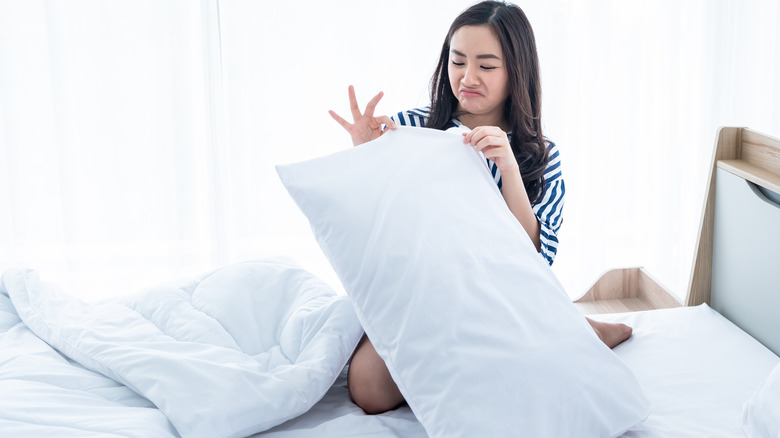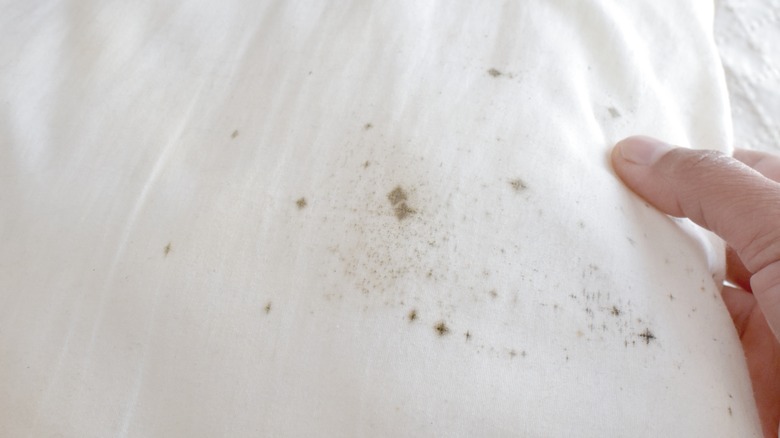Dead Giveaways Your Pillow Is Filled With Mold & What To Do About It
Did you notice some discoloration on your pillows while taking or putting back the pillowcases or washable covers? Maybe some suspicious flaky or smooth patches in varied shades, like green, white, black, orange, pink, blue, red, or brown? Or has your headrest started giving off a musty odor? In either case, don't brush off these warning signs as you could be dealing with mold on your pillows. Mold is a simple fungi and doesn't have too many demands in life. Its minuscule pores just need a moist and humid environment with some sustenance to establish itself and take over your trusty pillow.
Perspiration, drool, accidental spills, and tears are all conducive to mold. Add in a humid climate to the mix, and the fungi would love nothing more than to settle down for the long haul. Regarding food, your dead skin cells are appetizing enough. Once they have the lay of the land, mold will give off mycotoxins and spores. Since they can trigger your allergic reactions, disrupt your sleep, cause infections, and lead to mycotoxicosis, you don't want to share your pillow with the fungi. At this point, you have two options. You can either give your pillows a much-needed deep clean with a few household staples to eliminate the fungi. Or, replace your pillows if you have had them for more than two years (memory, polyfoam, latex, and down might last up to three years if cared for properly) and they're past their prime.
What to do if your pillow is filled with mold
Once you're certain you're dealing with mold, don a mask, protective eyewear, and gloves to minimize contact with the active fungi. You must also remove the affected pillow from your bedroom. If your pillows are relatively new and in good shape, you might want to wash them to get rid of mold. Check your headrest's care label to determine the proper method for washing your bed pillows. If it's machine-friendly, plop the fungi-infested pillow into the washer with a half cup of baking soda and one cup of vinegar before selecting the hot cycle to kill the fungi.
However, if it isn't machine-washable, mix laundry detergent with water and apply it onto the stains using an old toothbrush. In case the stains are stubborn, cut a lemon in half, apply a tablespoon of salt (both table and sea work) on top, and use it to kill the mold and scrub the stain away. Whichever route you go, air dry (or tumble dry if the material is compatible) the wet spots quickly to keep mold from attacking it again. That being said, if the mold has had time to put down roots and develop tiny colonies, it'll be incredibly difficult to get them out since they'll settle deep into your pillows. Under such circumstances, it's best to replace your pillow. Don't go to bed with wet hair, wash your new headrest and its covers regularly, and increase indoor ventilation to keep mold at bay.

